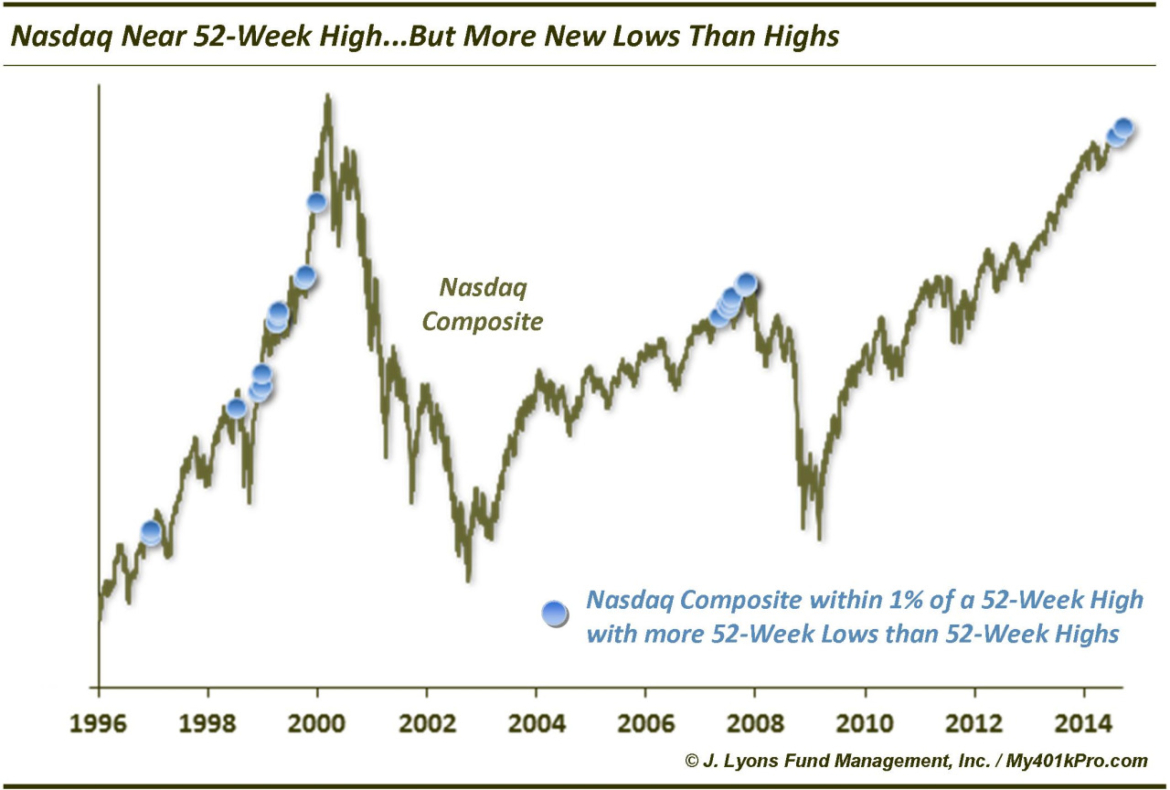Nasdaq near 52-Week High…but more New Lows than Highs
We’ve been discussing the gradual thinning of the stock market rally over the past several months. Again, it is preferable to have as much participation from as many stocks as possible supporting a rally. When only a relatively few stocks are holding the market up, it is more susceptible to a decline when those stocks give up the ghost since the market lacks that broader foundation. Yesterday’s action produced a particularly egregious example of the thinning foundation. While the Nasdaq Composite closed within 1% of its 52-week high, there were actually more New 52-Week Lows than Highs on the Nasdaq exchange.
This situation has been an extremely rare occurrence. It has happened on just 27 days (mostly in clusters) over the last 28 years, including on July 28. The track record following these readings is quite dubious, with one major exception.
- Following 2 occurrences in December 1996, the Nasdaq rallied for another month before dropping 14% over the next 3 months
- In July 1998, the Nasdaq peaked 9 days after an occurrence, losing a third of its value over the next 3 months
- It happened several times in 2007, once in May then 4 times from June 21 to July 18. The Nasdaq dropped about 12% in a month starting on July 19. There were 4 more occurrences in October 2007 leading up to the cyclical market top.
The big exception was during the extraordinary blowoff from 1998 to early 2000 when this condition emerged no fewer than a dozen times. We’ve discussed this period on many occasions. While most stocks were actually mired in a bear market, the Nasdaq soared to parabolic heights on the back of a relatively few high flyers. The monumental collapse following the bubble top reveals the potential risk once a thin rally peaks.
The present thinning of the stock market rally is a serious concern. Such thinness is exemplified by the near new high in the Nasdaq Composite with more new 52-week lows than highs. While this condition has often occurred a bit in advance of the subsequent market peak, it has almost always preceded an intermediate-term correction of significant magnitude. The major exception was during the blowoff top in the late-1990’s. While it is always possible that a similar type move is pending, even the most ardent bulls may want to at least have an exit strategy or risk controls in place should it not transpire.
________
More from Dana Lyons, JLFMI and My401kPro.



